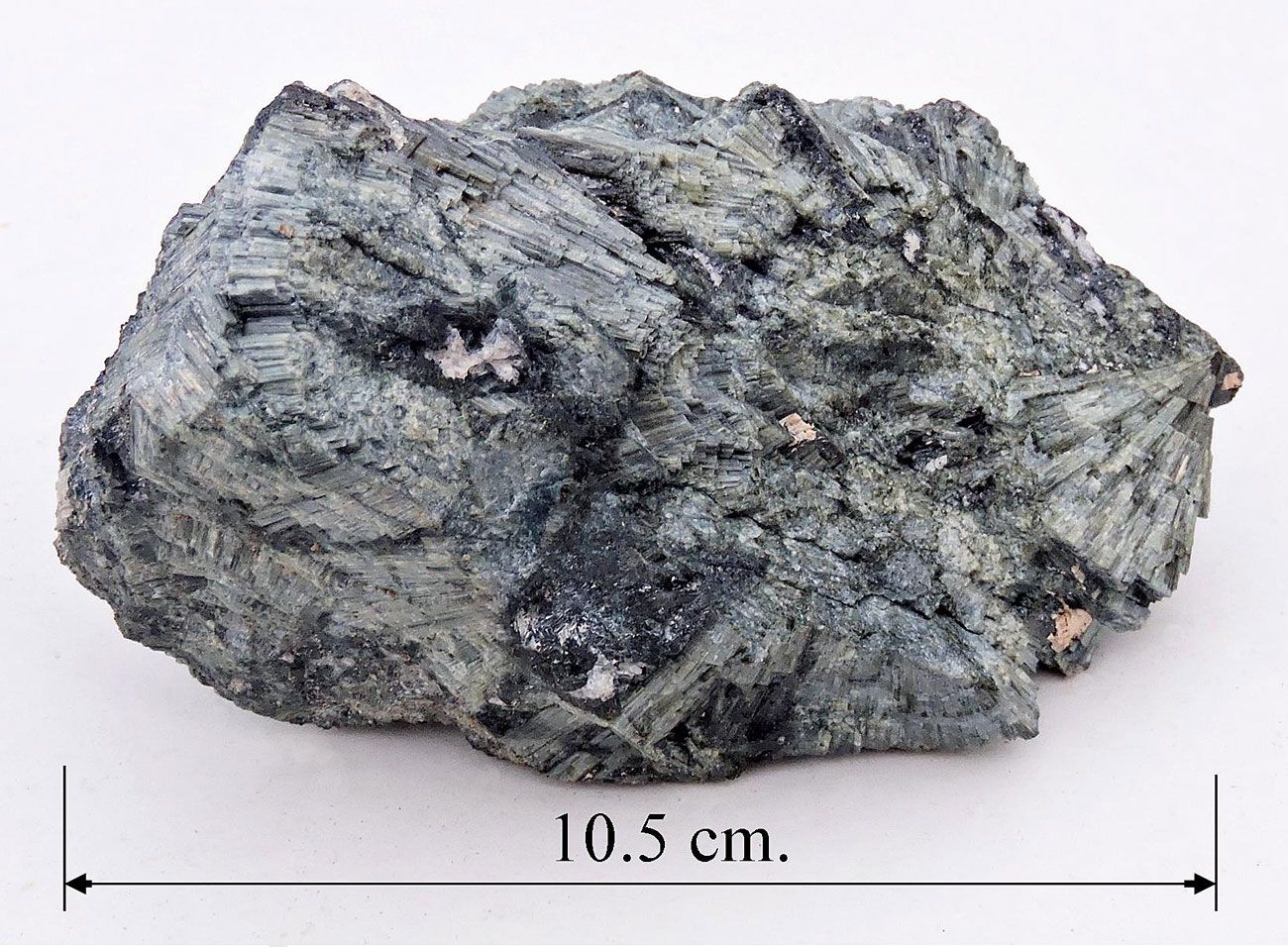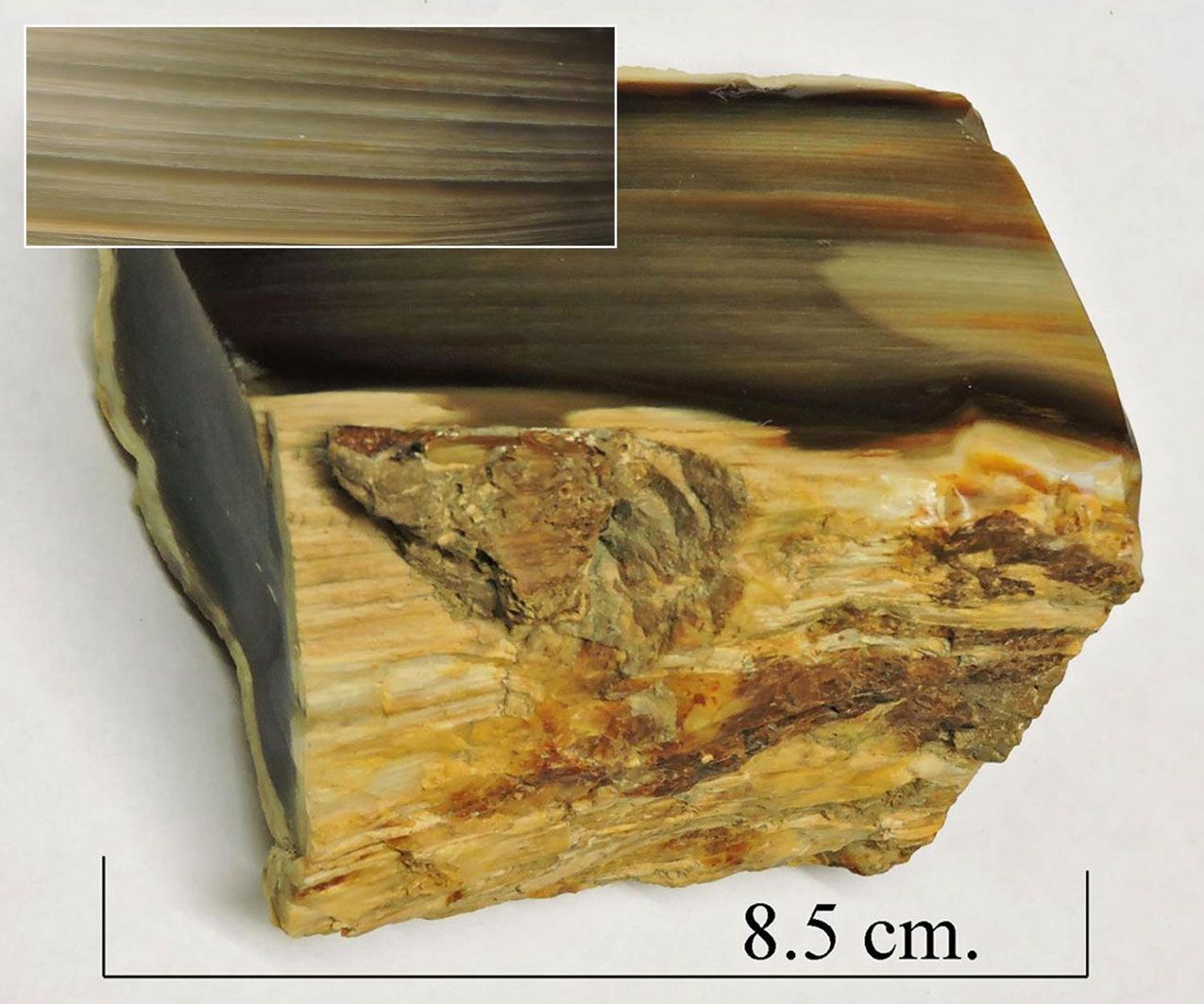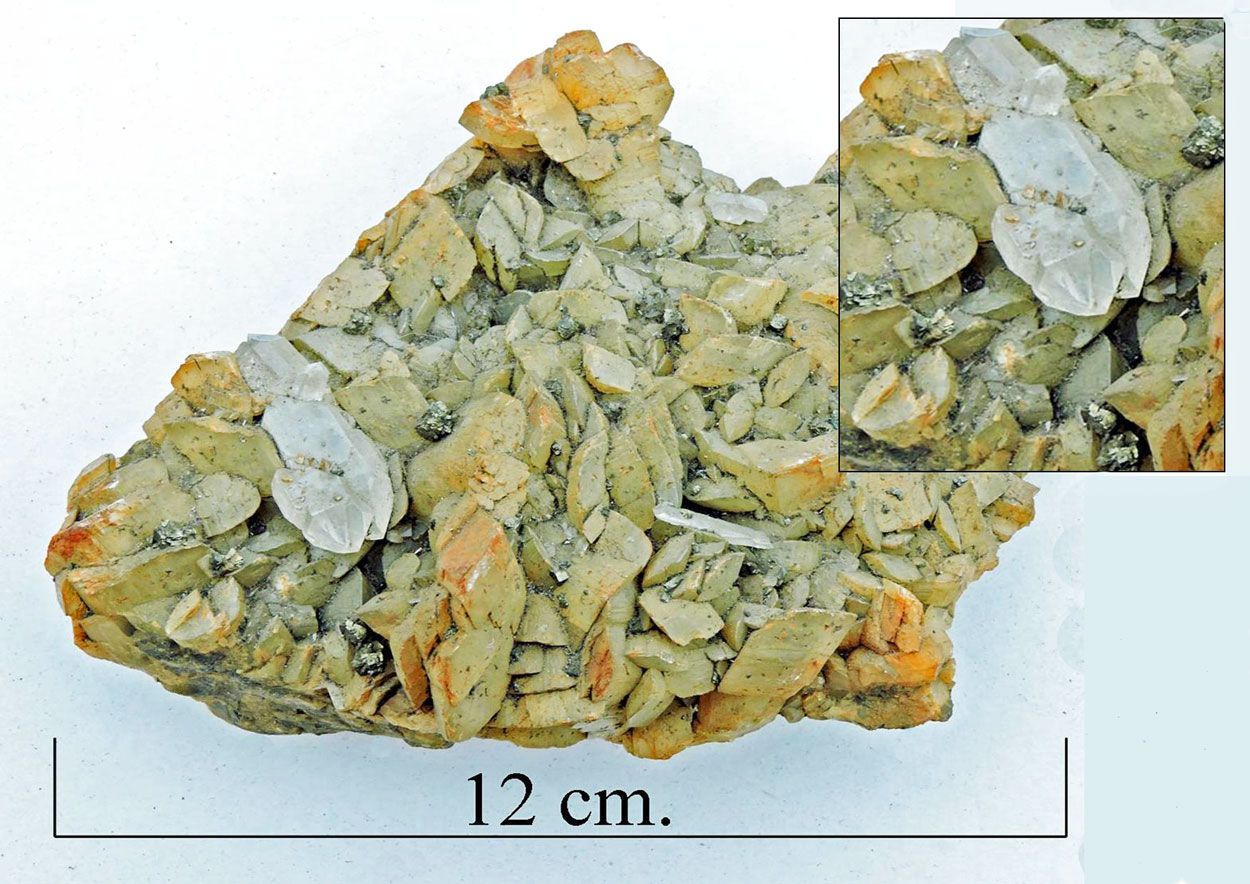
Phrehnite, Beith.
Prehnite is an inosilicate of calcium and aluminium, with the formula Ca2Al(AlSi3O10)(OH)2 The crystal structure is described as stalactitic or botryoidal aggregates. This specimen, which weighs 4 Kg. is mostly a very pale green colour, and some small botryoidal crystals are noted, however the bulk of the specimen is in massive form. A small vugh as in the inset shows some small flattened "rosettes" of radiating crystals. It is not unusual for prehnite to be associated with calcite, and this specimen has several pinkish crystals of calcite, the largest of which is 6 cm. overlying the phrehnite. The location is Loanhead quarry, Beith, Ayrshire in Scotland.



